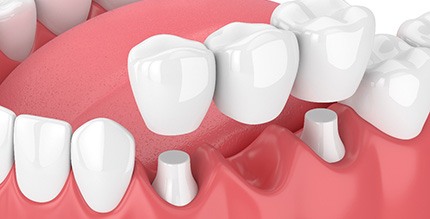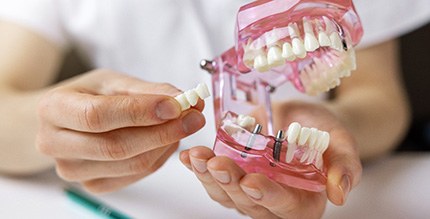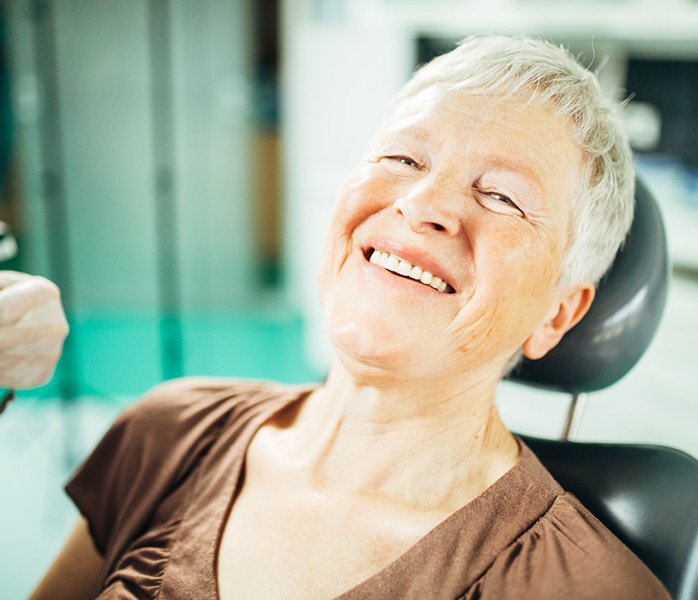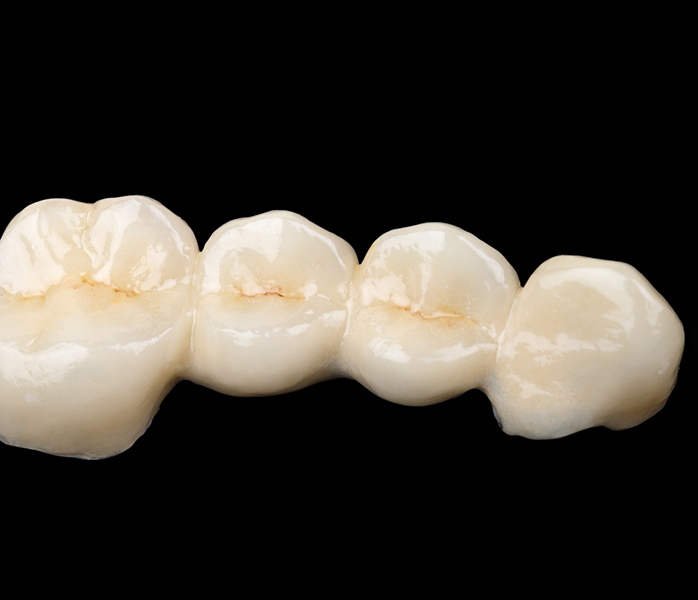


If you’re missing a few of your teeth, chances are you don’t like the situation. After all, gaps between teeth look unpleasant, hurt your self-confidence, and damage oral health. Fortunately, there’s a great way to fix the problem: a dental bridge in Millerville! With it, Dr. Tran and the Transcendent Smiles team can and do restore all sorts of smiles. To learn more about the treatment, just keep reading or book a consultation with us.

Put simply, a dental bridge is a device that replaces one or more missing teeth. It consists of a replacement tooth (i.e., pontic) with materials fused to its sides. Thanks to said materials, the prosthetic is held in place by abutment teeth on either side of the gap. For that reason, a bridge normally stays secure over time.
Good candidates for dental bridges meet the following conditions:

Before we can give you a dental bridge, we need to know which type is best for you. (Bridges, unfortunately, aren’t one-size-fits-all.) As such, your first treatment visit will be a consultation with Dr. Tran. For this appointment, she’ll learn your smile goals, the results you want from the procedure, and your medical history. By getting these facts, our office can then suggest (and make) a bridge suited to your needs.

The traditional one (per its name) is the more popular of the two kinds of bridges. Using dental crowns, it secures itself to abutment teeth that sit next to your smile gap.
One downside to this bridge is that it removes some enamel to accommodate its crowns. In exchange, though, it gives you lifelike results due to using ceramic and porcelain.

Unlike a traditional bridge, an implant one doesn’t use dental crowns. Instead, it’s fixed to your jaw with dental implants. The latter restorations fuse with your jawbone, so the treatment is permanent and stable.
Given its unique features, an implant bridge has more perks than the other type. Not only does it not slip when you speak or eat, but it also doesn’t alter your surrounding teeth.

Left untreated, tooth loss causes severe and long-term problems. However, a dental bridge resolves such issues by offering the following:
Ultimately, a dental bridge in Millersville could do you good. That being the case, call our office and book your first visit!

Dental bridges are a time-tested solution for missing teeth, but you may still have some questions about them. Don’t be afraid to speak up during your initial consultation if there’s anything you want to know; we love educating our patients about our services and helping them make the best choices for their care. To help save you some time, we’ve listed some common dental bridge questions below, along with helpful, easy-to-understand answers.
The longevity of your dental bridge can vary depending on a few different factors, but you can usually expect its lifespan to be somewhere in the range of 5 to 15 years. To keep your dental bridge in good shape as long as possible, be sure to:
It’s worth remembering that bridges that replace the front teeth often last a little longer. This is because bridges near the back of your mouth are subjected to more wear and tear from biting and chewing.
Wearing a dental bridge won’t stop harmful bacteria from attacking the gum tissue underneath. To keep your mouth safe from gum disease, you need to clean underneath your bridge every day. One way to do this is to loop some dental floss through a threader, slide the pointed end under the bridge and out the other side, and gently move the floss back and forth.
If you find traditional dental floss too difficult to use, you might consider an interdental brush or a water flosser instead. We’ll be happy to help you explore the available cleaning options.
During the healing process after teeth are removed, the gums and jawbone will likely change shape. As such, if you get a bridge right away, it might not fit properly and will need to be replaced eventually. It’s better to wait to have a bridge placed until healing is complete. The recovery process can take between eight to twelve weeks in most cases, but the exact timeline is different for every patient.
Every dental plan is different, but in most cases, the answer is yes. The majority of dental insurance providers consider bridges to be a major restorative procedure, so normally coverage is around 50%; this is before your deductible and annual maximum are taken into account.
Remember that dental insurance is not your only option for making your dental bridge more affordable. We offer in-house financing plans that can be tailored to your own budget. You’ll be able to pay for your care in smaller monthly installments that don’t put as much of a strain on your bank account.